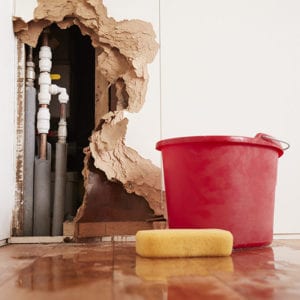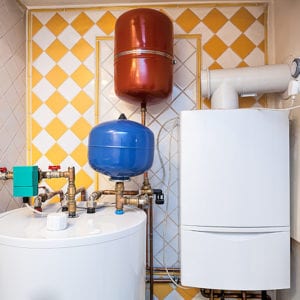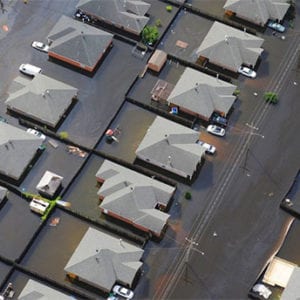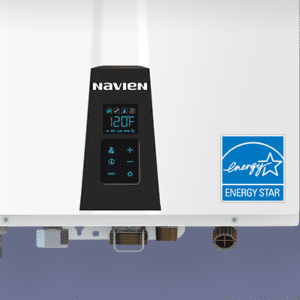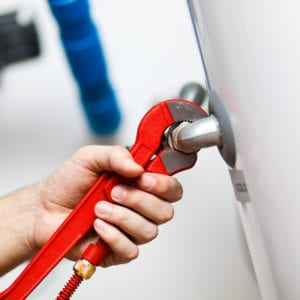How to Protect Your Home From a Sewer Backup Using a Backwater Valve
Sewer backup is one of the last things you ever want to happen to your home. It’s nauseating just to imagine.
But sewer backups do happen…and truth be told, they’re happening more and more frequently in our neck of the woods.
Fortunately, you can greatly reduce the risk of a sanitary sewer backup in your home using a device designed for this exact purpose called a backwater valve.
In fact, backwater valves are so effective in preventing sewer backup that many municipalities and insurance companies will pay you hundreds or thousands of dollars to help cover the cost of installing one.
Don’t wait until it’s too late to protect your home from a sewer backup! Here, we’ll lay out one of the most effective and affordable ways to reduce your risk.
Am I At Risk of a Sewer Backup?
The short answer is this: if your home is connected to a sewer, it is possible for sewage to backup into your home.
The pipe that connects your home to the underground sewer pipes is called the sanitary sewer lateral. Everything you flush down the toilet or pour down the drain eventually makes its way into that pipe, and from there, into the municipal sewer system.
Ordinarily, the sewer lateral is a one-way street. But when the sewer system receives more water than it can handle, the water can move backwards up the pipe toward your house.
In a worse case scenario, sewage can even come into your home through any of your basement fixtures: the floor drain, toilet, sink, or even your washing machine. Next thing you know, there’s sewage spilling onto your basement floor.
Unfortunately, we’re seeing this happen more often now that urban flooding has become so common. It’s not only urban Toronto that’s affected – just look at how flooding has hit Stratford, Orangeville and other cities on the outskirts of the GTA in recent years.
But the scary thing is, sewer backup can occur even when there hasn’t been any flooding! It can also happen at any time of year if there’s a major sewer blockage downstream.
Sewer backups don’t happen terribly often, but when they do, they can cause significant property damage. The damage can extend to your:
- Basement drains and plumbing fixtures
- Flooring, carpeting and drywall
- Electronics and belongings stored in the basement
- Furnace and water heater units
- Home’s foundation and structure
Even one of these items could cost thousands of dollars to repair or replace, and then there’s the items that are irreplaceable.
What Is a Backwater Valve?
A backwater valve, also known as a check valve or backflow prevention valve, can effectively stop sewage from backing up into your basement. It is a one-way valve that allows wastewater to flow out of your home into the sewer system, but not the other way around.
When sewage comes back up the pipe toward the house, the flow automatically forces the valve shut. It will only reopen when the water level drops back down. This simple mechanism works requires no electricity and minimal maintenance, so it’ll continue to protect you even in a blackout or when you’re away from home.
Some newer houses are sold with a backwater valve already installed, but most are not. Call us if you need help finding the backwater valve in your home.
Installing a Backwater Valve: What You Need to Know
For those of us who live in flood-prone areas, a backwater valve might seem like a perfect solution to a growing problem. However, installing a backwater valve isn’t as simple as replacing a few pipes.
Here are a few things to consider when you’re thinking of having one installed:
- When the backwater valve closes, you can’t use your plumbing system as you normally would.
You’ll have to avoid showering, flushing the toilet, using the washing machine or dishwasher, or putting anything until conditions return to normal. Consider having an alarm installed so you’ll always know when the valve is shut. - You’ll need to apply for a permit before you install one.
Paperwork and permit fees may apply. - Installing a backwater valve is a big job.
The installer will have to cut out part of your basement floor to service your sanitary sewer lateral. The valve must be installed just outside of the point where the lateral exits your home. You will also need to account for your home’s weeping tile. - Your backwater valve will require some maintenance.
Otherwise, it could fail when you need it most. A licensed plumber should check to ensure the valve is sealing properly and free of blockages once a year.
Call us or reach out to us online to find out whether a backwater valve is right for your home.
Backwater Valve Subsidies
With the rise in urban flooding events, many municipalities in the Greater Toronto Area have begun offering subsidies to help homeowners cover the cost of installing a backwater valve.
- Region of Peel: backwater valve subsidy of $700
- Halton Region: subsidy of up to $675 or 50% of the cost
- City of Toronto: subsidy of up to $1,250 or 80% of the cost
Need something we haven’t covered here? Call us or send us a message to learn more on the benefits of a backwater valve. We’re happy to help!

